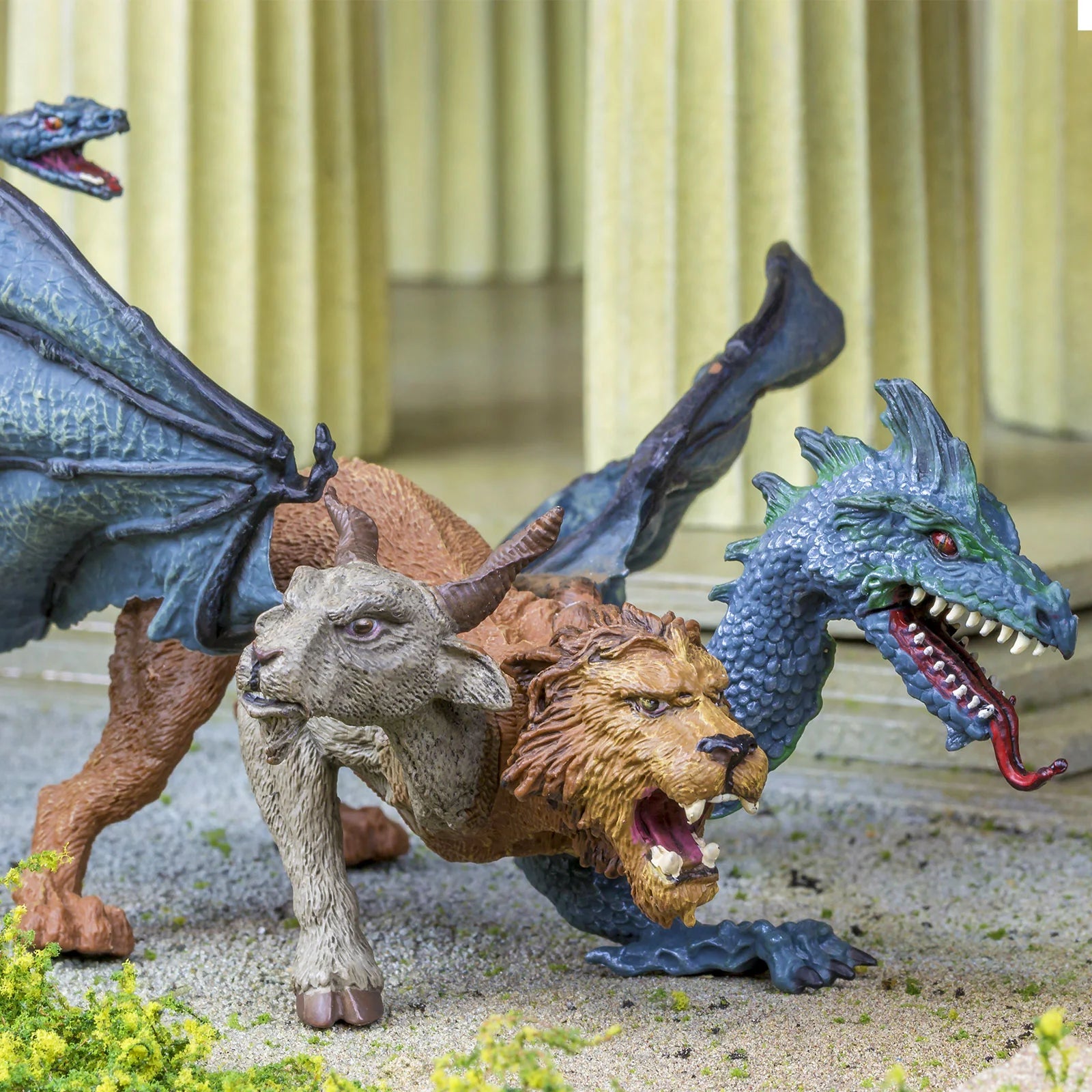How long ago did figurines of people and animals appear? This question will take you on a journey through the ages to see the evolution of animal figurines from ancient figures to modern collectibles.
Ancient Figures in Mesopotamia
Near 5000 BC, Mesopotamian artists created small figures out of clay. These included creatures and people, and people used them for religious purposes and also as good luck symbols. These are the oldest known animal figurines.
Animal Figurines in Ancient Egypt
As far back as 3000 BC, Egyptians created small statues of animals. They used them in religious rituals, which showed deep connections between the animal kingdom and the human world. For example, they believed that cats were good luck, and so many people had cat figurines in their homes.
Mythical Animals in Greece and Rome
Between 800 BC and 475 AD, the Greek and Roman civilizations crafted figurines of mythical creatures, such as centaurs, and griffins. These animals appeared in their mythology, religious beliefs, and legends. Griffins supposedly guarded mountain gold mines. Greeks also made terracotta figurines and toys such as rattles.
European Figurines in Medieval Times
How long ago did figurines of people and animals appear as talismans and charms? In 500 AD in Europe, craftsmen were creating animal figurines from clay and wood that knights would carry into battle. They believed that these talismans gave them good luck. People also placed them in churches and in homes.
Intricate Art in the Renaissance
The Renaissance was a time when art experienced a rebirth and became more sophisticated and intricate. The artists of this era created tiny porcelain animal sculptures with tiny details. This was the most popular type of animal figurine in this era. Artists created these tiny figures as art to be enjoyed. This period ran from the 14th to the 17th century.
Modern Collectibles and Animal Figurines
From the 19th century on, close to the Industrial Revolution. This means that figurines started to be mass-produced in factories. This method of production made them affordable and accessible to everyone. Ceramic animal figurines of elephants and puppies made in Staffordshire, England, were especially popular in this period.
Plastic Figurines in the 20th Century
How long ago did figurines of people and animals appear in a wider variety and become children’s toys? In the 20th century, large companies selling plastic toy figurines appeared. Plastic became the new material for all sorts of things, including toys, and kids around the world now had access to little animals at affordable prices.
Digital Figurines Today
Today, not all figurines are physical. Virtual animal figurines appear in video games, as virtual pets, and on online platforms. You can interact with them and they can move and play. Today’s digital world has embraced animal figurines in a way that makes them entertaining for all ages.
The Timelessness of Animal Figurines
From ancient times until now, animal and people figurines have existed for various purposes. Today, animal figurines are as popular as ever, for both children and collectors. Here at Safari Ltd. we have an extensive offering of collectible plastic animal figurines at affordable prices.
Sources:
- https://en.wikipedia.org/wiki/Animal_figurine
- https://artsandculture.google.com/usergallery/jwJywhETWftXIg
- https://en.wikipedia.org/wiki/Animals_in_ancient_Greece_and_Rome
- https://archaeologicalmuseum.jhu.edu/class-projects/archaeology-of-daily-life/childhood/terracotta-dog-rattle/
- https://humanorigins.si.edu/evidence/behavior/art-music/figurines
- https://www.nationalgeographic.co.uk/family/2020/11/from-marbles-to-mickey-a-short-but-awesome-history-of-toys
- https://www.safariltd.com/collections/safari-ltd-figurines
- https://www.britannica.com/summary/ancient-Greece
- https://www.safariltd.com/search?type=product&q=animal*+figurines*
